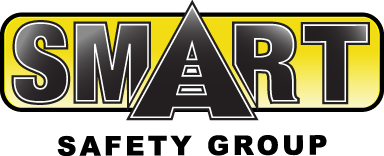Caught-In-Between Incidents: A Rising Issue in Construction
Caught-in or caught-between incidents are extraordinarily common and can very quickly become fatal. According to OSHA’s Construction Focus Four: Caught-In or -Between Hazards there is a simple distinction between “caught” and “struck” incidents, which they outline by saying:
“The key factor in making a determination between a Caught event and a Struck event is whether the impact of the object alone caused the injury. When the impact alone creates the injury, the event should be recorded as Struck. When the injury is created more as a result of crushing injuries between objects, the event should be recorded as Caught.”
Some examples of incidents that would be classified as a form of caught are trenching or caving incidents, caught in machinery/equipment and being crushed or compressed between two or more items. Imagine an employee working in the bottom of a trench when the walls begin to cave, this person could very quickly be caught and buried. Consider an employee pushing wood through an unguarded saw and his hand getting pulled in, causing his finger to be amputated. Another example would be an employee operating a forklift with an unsecured load that rolls off and pins another employee to the wall. Small, preventative steps could be taken to eliminate incidents like this, which is why it is extremely important that employees follow each step when it comes to safety processes.
In 2018, OSHA noted that trenching and excavating incident rates were alarmingly high and they were making it a goal to reduce this number. There were twice as many of these incidents in 2016 compared to the average over the previous five years. To reduce trenching and excavating incidents on your jobsites you should try not to use heavy machinery near excavation if there are people working in the trench. It is also an OSHA requirement to have a competent person inspect any trenching and excavating work being done on your sites.
Workers should always be aware and cautious of their surroundings, especially when they are working on a site where there are many moving parts. When there is a lot happening it can be distracting to drivers on heavy machinery, which creates an environment where incidents are more likely to occur.
The Department of Labor released a video, 5 Things You Should Know to Stay Safe in a Trench, Acosta, that quickly highlights a few tips on how to keep yourself and others safe when working in and around trenches. To prevent caught incidents there are a few best practices to follow, some of which include:
- Never entering an unprotected trench that is 5 feet or deeper without a protective system in place, and often even trenches under 5 feet need protective systems. Better safe than sorry!
- Ensure the trench or excavation is protected by sloping, shoring, benching or trench shield systems.
- Recognizing hazards and communicating them to everyone working on the site is extremely important. Knowing the risks and dangers around you increases awareness.
- Keep your distance. When equipment is in use pay attention and maintain a safe distance.
When beginning new site work it is extremely important to ensure you are complying with the most recent standards and regulations set by OSHA to avoid injuries and/or fines. OSHA has a great search bar that allows you to use keywords to find regulations that are pertinent to your industry. Often this type of research falls into the lap of a safety coordinator or safety manager.
SMART Safety’s safety services managers can help your company outline which standards pertain to your work and help train your employees to ensure compliance. By conducting training, audits and hosting monthly safety meetings, SMART Safety can help your company build a strong safety culture and reduce incident rates. For more information on SMART Safety and our services, please visit our website or give us a call (844) 820-8098!








